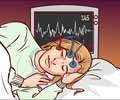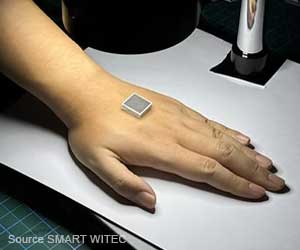Recent progress in the development of wearable devices has presented alternative ways for sleep monitoring at home, which could be useful in sleep apnea detection.

Health Care Savings: The Economic Value of Diagnostic and Therapeutic Care for Obstructive Sleep Apnea
Go to source), is on the rise in the U.S., but current protocols to conduct clinically accepted assessments are expensive and inconvenient.
TOP INSIGHT
‘At-home wearable electronics could ensure a promising future supporting portable sleep monitoring and home healthcare for sleep apnea. #sleep apnea #wearable devices #sleep tracker’
Scope of Remote Patient Monitoring Technology in Sleep Apnea Diagnosis
Lack of quality sleep can exacerbate other health issues in people with existing illnesses such as heart disease or diabetes. Even those who don’t have other health ailments can have serious complications from sleep apnea because the longer it goes undetected and untreated, the more it will affect their hearts and brains over time.Under conventional methods, people having some sleep issue or disorder must go to a medical facility, where they are monitored overnight and tethered to a series of wired probes that record brain, eye, and muscle activity.
The wearable sleep monitor patch developed by a team of researchers is made of silicone and fits over the forehead, with a second, smaller silicone attachment that molds to the chin.
Conventional existing sleep testing is occurring in sleep labs because of device limitations. This at-home wearable device could be the alternative to the more expensive medical procedures at sleep labs. Researchers have reported their findings in Science Advances.
Advancing Healthcare Through the Development of Biosensors Detecting Sleep Apnea
Seeing the toll sleep apnea was taking on the U.S. population, researchers set out to apply the new wearable device research to the industry with a wireless sleep monitoring patch system.The patches — which have an accuracy rate of 88.5% for sleep apnea detection — have the thickness of an adhesive bandage. Three embedded electronic sensors send signals wirelessly via Bluetooth to record brain, eye, and muscle activity (2✔ ✔Trusted Source
At-home wireless sleep monitoring patches for the clinical assessment of sleep quality and sleep apnea
Go to source).
Underlying health issues are partly behind the increase, but key drivers are the types of food and portion sizes of the modern American diet as well as stress.
The machine learning algorithms used can predict the likelihood that a person who doesn’t show any symptoms of sleep apnea will develop it at some point. Therefore, wireless patch solves a multipronged challenge to the conventional testing methodology by addressing current patient issues with comfort, time, access, and cost (3✔ ✔Trusted Source
Current Status and Future Challenges of Sleep Monitoring Systems: Systematic Review
Go to source).
Even for people who don’t show symptoms, you won’t know whether you have the sleep disorder until it gets severe. This new device can stop sleep apnea before it starts.
References:
- Health Care Savings: The Economic Value of Diagnostic and Therapeutic Care for Obstructive Sleep Apnea - (https://jcsm.aasm.org/doi/10.5664/jcsm.6034 )
- At-home wireless sleep monitoring patches for the clinical assessment of sleep quality and sleep apnea - (https://www.science.org/doi/10.1126/sciadv.adg9671 )
- Current Status and Future Challenges of Sleep Monitoring Systems: Systematic Review - (https://biomedeng.jmir.org/2020/1/e20921/ )
 MEDINDIA
MEDINDIA




 Email
Email









